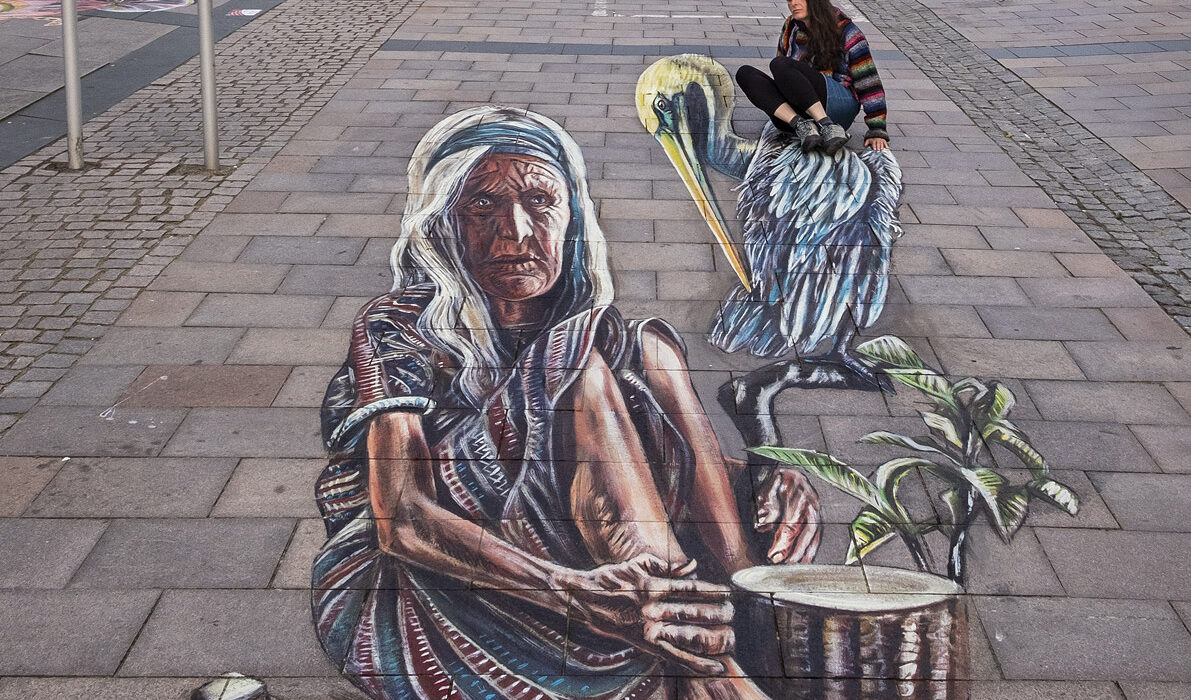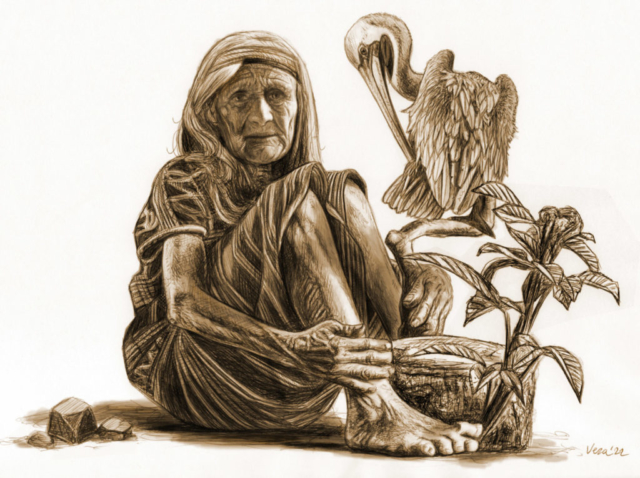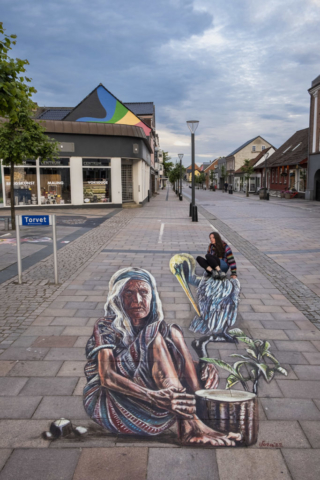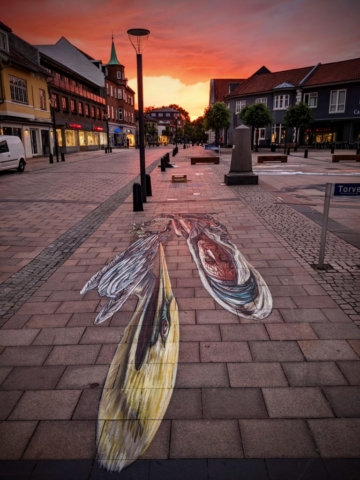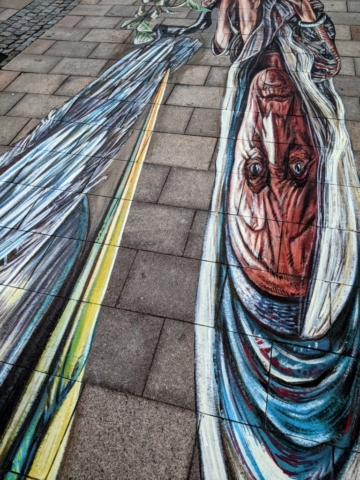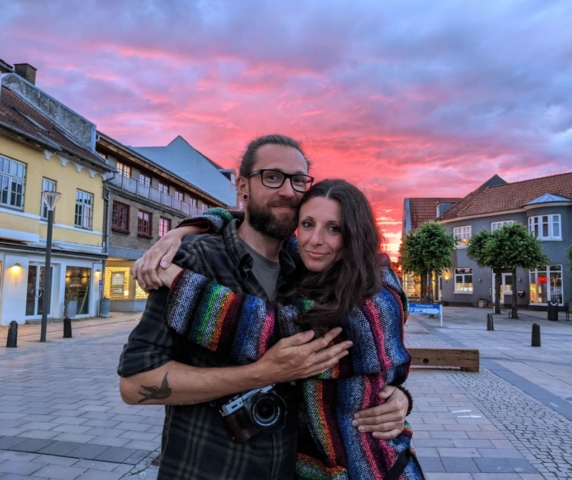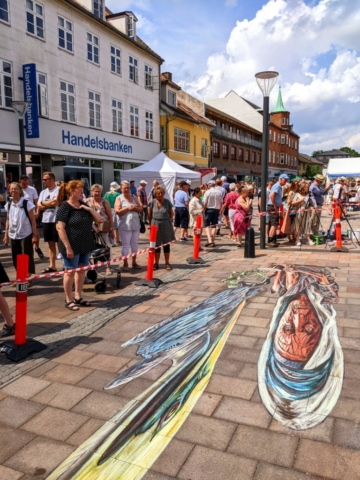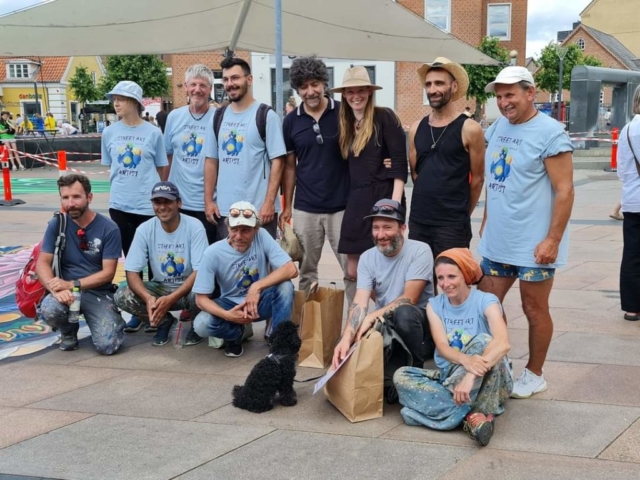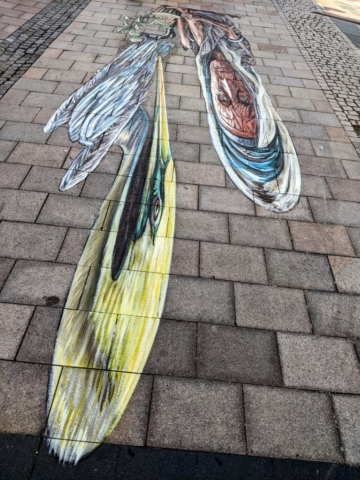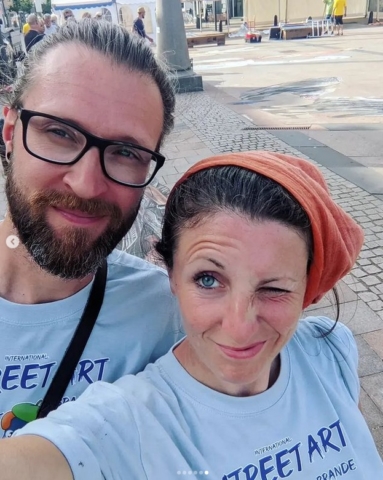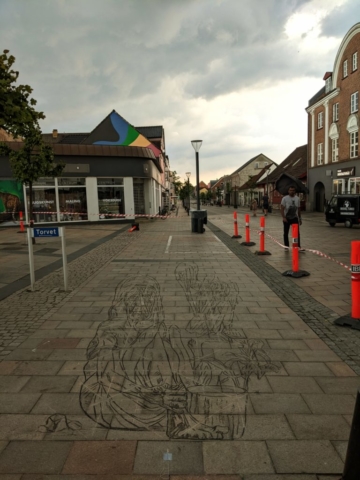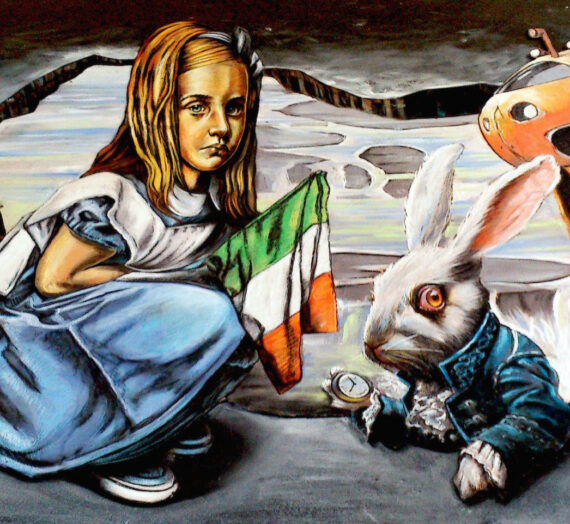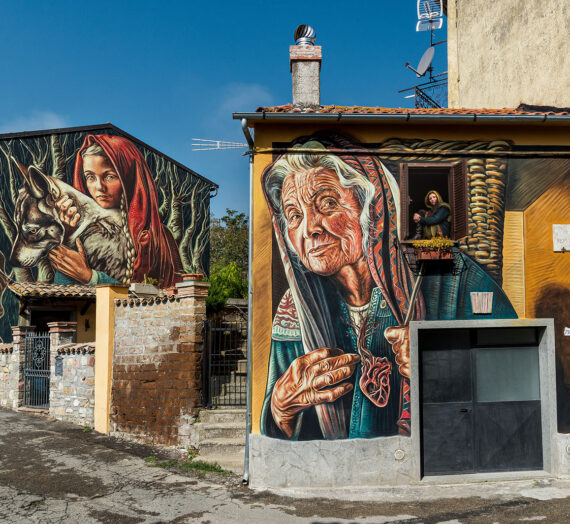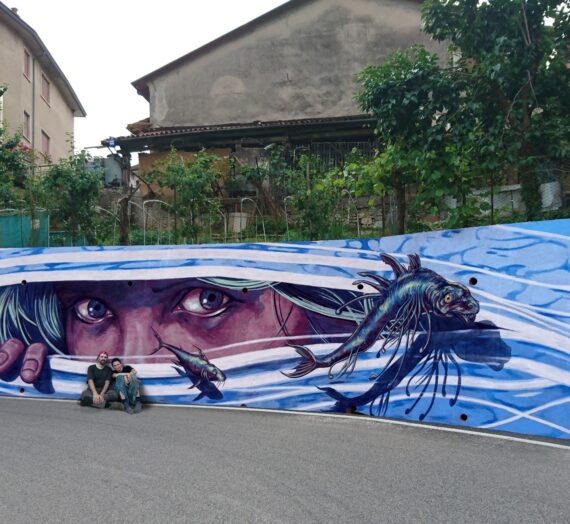At COP26, over 100 states including China, Bolsonaro’s Brazil, Putin’s Russia and the EU have pledged to stop the destruction of forests by 2030. It seems as good news yet it is difficult to think of really solving a situation that became so gangrenous.
According to an estimate by the FAO, from 1990 to 2020 over 420 million hectares of trees were lost worldwide. The areas most involved are the tropical and subtropical areas: 9 in South America, 8 in Africa, 7 in Asia and Oceania.
Around the world, women are at the forefront of promoting the environmental revolution, fearless women lead the charge against the status quo and for environmental justice.
Thinking to these issues I created my last anamorphic painting on pavement in Brande, Denmark, and the title was “Don’t let’em get you down”.
The work was dedicated to the theme of deforestation and inspired by the many stories of indigenous women who try to hinder the advance of environmental ruin all over the world as they can.
In the Amazon we meet figures such as Salomè Artanda, O-é Kaiapó Paiakan, Maria do Rosario, Margot Ecobar, Maísa Guajajara or Nema Grefa. But if you move east, the music doesn’t change and we meet Hamisah, an Indonesian village chief who fights against illegal deforestation (largely caused by the conversion of forests into industrial oil palm plantations) or Indian activist Vandana Shiva. And to the south, movements like TreeSisters.
Many of them are young but join wiser women in their family in active female resistance. So, I thought of an old and stubborn woman who would represent them all. A sad figure who while wearing an oriental dress, however, has traits that could also be European or Middle Eastern.
A wrinkled mother nature that with her arms surrounds a severed trunk stump from which a sprouted branch is born. In her left hand a gnarled stick on which a pelican is perched, washing himself and looking at us sideways.
(And now in Italian)
Alla Cop26 oltre 100 Stati tra cui la Cina, il Brasile di Bolsonaro, la Russia di Putin e l’UE si sono impegnati a fermare la distruzione delle foreste entro il 2030. Sembra una buona notizia eppure è difficile pensare di risolvere davvero una situazione che si è così incancrenita.
Secondo una stima della Fao, dal 1990 al 2020 sono andati perduti nel mondo oltre 420 milioni di ettari di patrimonio arboreo. Le zone più coinvolte sono le aree tropicali e subtropicali: 9 in Sud America, 8 in Africa, 7 in Asia e Oceania.
In tutto il mondo, le donne sono in prima linea nella promozione della rivoluzione ambientale, donne senza paura guidano l’accusa contro lo status quo e per la giustizia ambientale.
Pensando a tali questioni ho creato il mio ultimo lavoro anamorfico su pavimentazione a Brande, in Danimarca, e il titolo era “Non lasciare che ti abbattano”.
L’opera è dedicata al tema della deforestazione e ispirata alle tante storie di donne indigene che cercano di ostacolare come possono l’avanzata della rovina ambientale, in tutto il mondo.
In Amazzonia incontriamo figure come Salomè Artanda, O-é Kaiapó Paiakan, Maria do Rosario, Margot Ecobar, Maísa Guajajara o Nema Grefa. Ma se ci si sposta ad est la musica non cambia e incontriamo Hamisah, capovillaggio indonesiana che si batte contro la deforestazione illegale (causata in gran parte dalla conversione delle foreste in piantagioni industriali di palma da olio) o l’attivista indiana Vandana Shiva. E a sud movimenti come TreeSisters.
Molte sono giovani ma si uniscono a donne più sagge della loro famiglia in una resistenza attiva al femminile. Allora ho pensato ad una donna anziana e pervicace che le rappresentasse tutte. Una figura triste che pur indossando un abito orientale, ha però tratti che potrebbero essere anche europei o mediorientali.
Una madre natura rugosa che con le braccia cinge un ceppo di tronco reciso dal quale nasce un ramo germogliato. Nella mano sinistra un bastone nodoso sul quale sta appollaiato un pellicano che si lava e ci guarda di sbieco.
